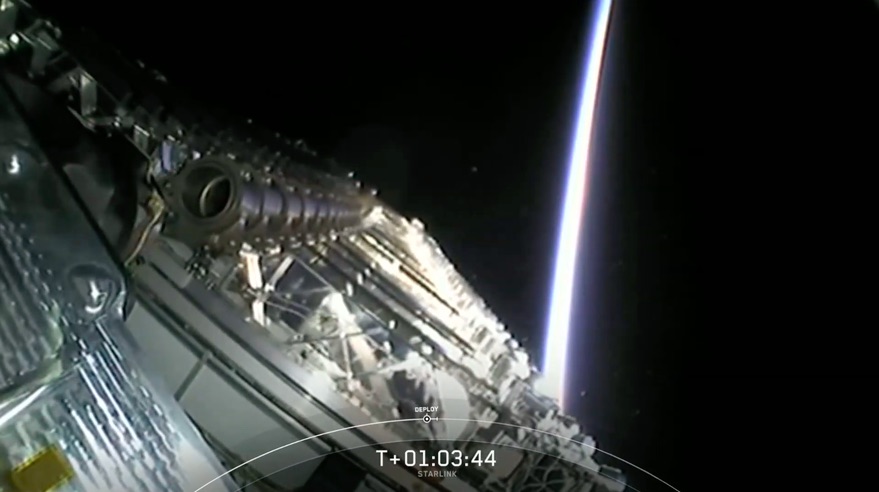WASHINGTON — SpaceX launched another set of Starlink satellites Oct. 24, marking the 100th time the company has placed payloads into orbit.
The Falcon 9 rocket lifted off from Space Launch Complex 40 at Cape Canaveral Air Force Station at 11:31 a.m. Eastern. The rocket’s upper stage deployed the payload of 60 Starlink satellites into orbit 63 minutes after liftoff. The first stage, making its third flight, landed on a droneship in the Atlantic Ocean.
This was the 100th successful launch in the company’s history. That total includes 95 Falcon 9, three Falcon Heavy and two Falcon 1 launches. The company also suffered three Falcon 1 launch failures and one Falcon 9 launch failure; another Falcon 9 was destroyed in 2016 during preparations for a static-fire test.
The launch was the third Starlink mission in less than two weeks, after Falcon 9 launches Oct. 6 and Oct. 18 that each carried 60 Starlink satellites into orbit. The company has now launched 895 Starlink satellites, 55 of which have reentered either because of passive orbital decay or by being actively deorbited.
SpaceX has boasted in filings with the Federal Communications Commission of the high reliability of the Starlink satellites. That included an Oct. 15 filing about an ex parte meeting between SpaceX and FCC staff where the company noted “the successful launch and operation of nearly 300 additional satellites without a failure” since an earlier report filed with the FCC.
That streak, though, may have been broken on the previous launch. Satellite observers noted that one of the satellites on the Oct. 18 launch, identified as Starlink-1819, was not raising its orbit like the other 59. Tracking data showed that satellite’s orbit was instead decaying, suggesting it had malfunctioned.
Starlink 1819 appears to be in trouble. Kelso’s SupTLEs (magenta) derived from SpaceX data stopped on Oct 20; 18SPCS TLEs (green) started for it later the same day and show continued decay. All other sats from the launch (red) are raising orbit pic.twitter.com/No1Kbr3Ke1
— Jonathan McDowell (@planet4589) October 21, 2020
SpaceX and its competitors have debated the reliability of Starlink satellites in a series of FCC filings in recent weeks. Viasat has argued that the failure rate of Starlink satellites is far higher than what SpaceX has promised, although the company made that argument in part on the apparent deliberate deorbiting of the original 60 “v0.9” Starlink satellites launched in May 2019.
The recent surge in Starlink launches is taking place as two other Falcon 9 missions remain on hold. The last-second scrub of a Falcon 9 launch of a GPS 3 satellite Oct. 2 has yet to be rescheduled, and the investigation into the gas generator problem that caused the scrub led NASA to postpone the Falcon 9 launch of the Crew-1 commercial crew mission, which had been scheduled for Oct. 31.
The Crew-1 launch remains on hold. In a series of tweets Oct. 21, Kathy Lueders, NASA associate administrator for human exploration and operations, said investigators were making “good progress” on understanding the engine issue, but that they were not ready to report the cause of the problem.
She did note that SpaceX will replace one Merlin engine on both the booster that will be used for the Crew-1 mission and the booster for the launch of the Sentinel-6 Michael Freilich ocean science satellite, scheduled for Nov. 10 from Vandenberg Air Force Base. The Sentinel-6 Michael Freilich launch remains on schedule for that launch even with the engine swap, she said.
The earliest Crew-1 would launch is mid-November, Lueders said. “We will want a few days between Sentinel-6 and Crew-1 to complete data reviews and check performance. Most importantly, we will fly all our missions when we are ready.”
